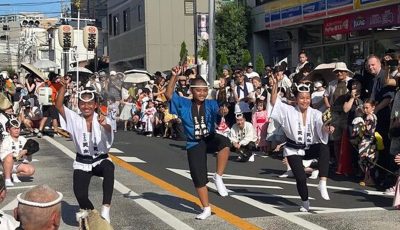US-Japan exercise heightens bilateral integration

Japanese Ground Self-Defense forces get off two Chinook CH-47 helicopters used in yesterday’s joint Keen Sword exercise at the Tinian North Field. More than 1,000 Japanese and U.S. troops are participating in the biennial joint bilateral exercise. (Jon Perez)
NORTH FIELD, Tinian—Two Chinook CH-47 helicopters landed a little past 2pm on the Tinian North Field and more than 40 Japanese troops rapidly got off from the Boeing Rotorcraft Systems-manufactured aircraft. The drill is part of the United States-Japan joint bilateral field training exercises held yesterday at the island’s former airfield that played a key role during World War II.
The joint military exercise is called Keen Sword where approximately 40,000 U.S. and Japanese personnel were participating in the longest bilateral field training where separate drills were also held in Guam, Japanese waters, and the Philippine Sea.
Keen Sword is one of the longest running bilateral field training exercise that began in 1986 between the U.S. military and the 150,000-strong Japanese Ground Self-Defense Force that aims to further strengthen the combat readiness and cooperation of both sides.
Keen Sword, the largest and the latest of a series of exercises, began on Nov. 4 on Tinian and ends today but the training would go on until Jan. 12, 2017.
Rear Adm. Marc Dalton, Task Force 76, and Brig. Gen. John Jansen of Task Force 79 from the U.S. 7th Fleet stationed in Okinawa, Japan led the U.S. troops on Tinian, with Adm. Katsutoshi Kawano heading the Japan side.
Dalton said the U.S. Navy and maritime task forces have been working with the JGSDF on amphibious and aircraft landing tactics in the joint exercise. The USS Comstock, a Whidbey Island-class dock landing ship of the U.S. Navy and the 11th Marine Expeditionary Unit, is also participating.
“This exercise is planned and executed by the Japanese. [The U.S. military] is participating in the operations as part of the command staff. We are participating in the operations to train both in the Okinawa, Guam, and CNMI areas,” said Dalton.
Japan sent their flagship J.S. Hyūga helicopter destroyer and the Ōsumi-class landing ship from the Japan Maritime Self-Defense Force. Both Chinook helicopters took off from Hyūga, which is the first Japanese ship where an American multi-mission MV-22 Osprey landed in the Dawn Blitz exercise in 2013.
Maj. Kensaku Mizuseki said that about 1,300 Japanese forces took part in the exercise on Tinian where an amphibious landing was originally planned at 2am yesterday.
“The Hyūga is also a transport ship and together with the Ōsumi had been in the service of the Japanese navy. The two Chinook helicopters flew to and from Hyūga, a helicopter landing ship. There are also CH-47 Apache helicopters which are also part of the exercise.”
Lt. Tim Gorman of the Joint Region Marianas Public Affairs Office, however, said the amphibious exercise was called off due to bad weather.



























